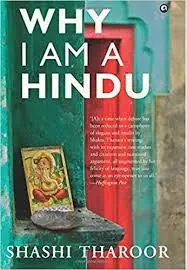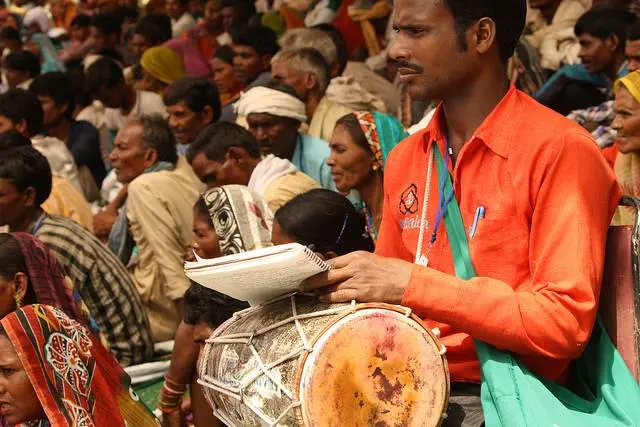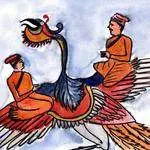Why I am a Hindu is a book written by Shashi Tharoor. I found it a good primer for anyone who wants to understand Hindutva. Here is my review:

Hinduism
Religion could be a complex subject as there are no straight answers. There are several perceptions which could vary with the familiarity one has with other religions.
Most books on India tend to have a historical introduction taking us back several centuries to explain the rich heritage of the land. Tharoor has done this oriented towards various ancient schools of thought in the first chapter ‘My Hinduism’. This answers the central question of ‘Why I am a Hindu’. It may appear extraneous to the real reason for writing on the subject when as he rightly says that the answer to the question is simply that one is born a Hindu. The definition of Hindu he traces to external influences that have given a label to the religion. The first chapter is something many will agree i.e.: the central idea of what is a Hindu and how sages, saints and even modern-day thinkers and freedom fighters have shaped it.
The first part is interesting to read especially if one is not familiar but inclined towards the thoughts of Shankaracharya, Vivekananda, modern day educationalists like KM Munshi (of Bhartiya Vidya Bhavan), the Ramakrishna Ashram and the reformist Bhakti movements that made the faith in some cases more conservative despite starting with a liberal view. Tharoor rightly highlights the absence of a dogma that shapes one’s faith on an individual level within the ambit of a loose religious federation.
The second part makes the book a relevant treatise to current situations, provided one shears off any political inclinations. It gives a concise history and explanation of the Hindutva ideology, making it a must-read for anyone interested in a commentary of the ideology. The chapter is on Political Hinduism.
Hindutva ideology has stayed dormant for a few of decades confined only to the Rashtriya Swayamsevak Sangh and the Sangh Parivar. Its mutation into a political entity has been silent yet steadily progressing. The Bhartiya Janata Party officially adopted the ideology as its defining credo in 1989.
There are certain aspects of the teachings of Savarkar and Golwalkar that need understanding.
The Hindutva Ideology
The ideology was invented by Vinayak Damodar Savarkar. He chose the term Hindutva to describe the ‘quality of being a Hindu’ in ethnic, cultural, and political terms. As per him anyone is a Hindu who considers India to be their motherland (matri-bhoomi), the land of the ancestors (pitra-bhoomi) and the holy land (punya–bhoomi). In this he includes all faiths that originated in India, thus excluding Christianity and Islam which do not satisfy all the three conditions.
‘Essentials of Hindutva’ is a book by Savarkar published in 1923. The book laid out the concept in detail. It must be remembered that this was also the period when eugenics was actively pursued in Europe and USA. The race doctrines led to the superiority of races that Hitler’s Nazi Germany and Mussolini’s Italy followed vigorously.
Savarkar, on the other hand, found that the Hindutva doctrine could not stand in absolute comparison to the race doctrines of the times and had no connection to Hinduism. He declared ‘Hinduism is only a derivative, a fraction, a part of Hindutva’. This position of Hinduism made the ideology quite apart from theocratic or religious dogma. Hindutva was more than a religion and as a political philosophy, it goes beyond those who are Hindus. Hindutva meant a common race (jati), a common nation (
As I mentioned earlier, the idea of Hindutva was born when eugenics and superiority of race theories were being brought to legislation in some parts of the world. Savarkar associated himself with a Nazi sympathiser called Savitri Devi (European born Hindu revivalist Maximiani Portas[1]). Savarkar wrote the introduction to her book ‘Warning to the Hindus’. The search for ‘moksha’ (escape, emancipation, freedom, or release) being abstract made the Hindu mind weak, enslaving the Hindu Rashtra for centuries together.
Tharoor argues that it wasn’t metaphysical Advaita philosophy that captured the interest of Savarkar and Savitri Devi, but a quest for power. To them political power was ‘power of law with organised military force.’
‘We would like Hindus to remember this, and to strive to acquire political power at any cost. Social reform was considered necessary, not because they will bring more ‘humanity’ among the Hindus, as many believe, but because they will bring unity, that is to say power.’[2]
It is also a time to compare the ideology with its practical application. Tharoor has clearly expressed the impracticality of the whole idea. It should have been clear to the early proponents of the ideology that the individual in Hinduism seeks to connect on an individual basis rather than a congregation as in other religions.
The ideology thus was based on a flawed idea of identity through religion. Tharoor does say that the attempt is ironical to make the religion more like Islam, which it is trying to contain because of historical domination. Many of us would not have read either Savarkar or Golwalkar or the more recent proponents of the Hindutva ideology. Tharoor does give a balanced commentary on them and for that
While many are purely interested in progress, national identity, and super-power status of India, which they feel appears out of an ideological base, the chapters dealing with the subject will reveal quite the opposite. Of course, it is an opinion, but one can see the fallacy for distinct reasons.
[1] https://en.wikipedia.org/wiki/Savitri_Devi
[2] http://savitridevi.org/hindus-06.html






